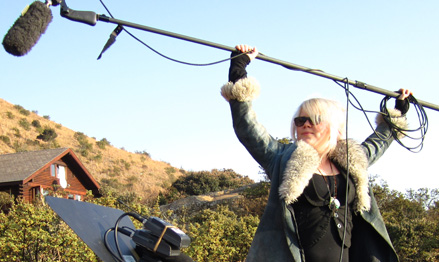|

|
| Sandy Little |
The launch of the film and book Africa meets Africa: Pathways through the Interior at our university was a huge success.
It forms part of the The Africa meets Africa Project that is known for making connections between knowledge systems in pursuit of learning. It integrates amongst others beadwork and weaving with mathematics.
The film takes one through the Free State and some parts of the Northern Cape. The two actors, Mr Lerato Mokhitli and Ms Sandy Little, are both art students at Kovsies. During the trip they reveal some historic events not known to all. Prof. Jonathan Jansen, Vice-Chancellor and Rector, said: “Our history is a lot more complex and interesting than current texts allow. Much of what happened laid the foundations for trauma, and triumph is poorly understood. More so, is the history of the ordinary.”
The film and book are funded by National Heritage Council and FirstRand. It was launched in other provinces, among them KwaZulu-Natal. The Africa meets Africa Project aims to use the book in the Free State and Northern Cape in the Further Education and Training (FET) phase for educators and university students.
Prof. Jansen furthermore said: “I would definitely recommend the book with some additions, such as representation of excluded cultures. This would include white ethnographic histories and cultures and the intersections across black/white, African/European histories. I would also make the subject history compulsory to ensure that children would be exposed to our complex history.”
Ms Moipone Kabaoe, a third-year B.Soc.Sc. student at UFS, said: “The film was very informative and clarified some things. I also believe the actors have actually grown from the experience and they did a great job.”
Mrs Anna Mokhitli was ecstatic at the launch, as any proud mother would be. “I knew they were working so hard, but I never thought it would be something this big,” she said. Ms Helene Smuts, Director of Africa meets Africa, said: “You cannot learn until you start with what you know. This is the journey we took; now you must take your own.”